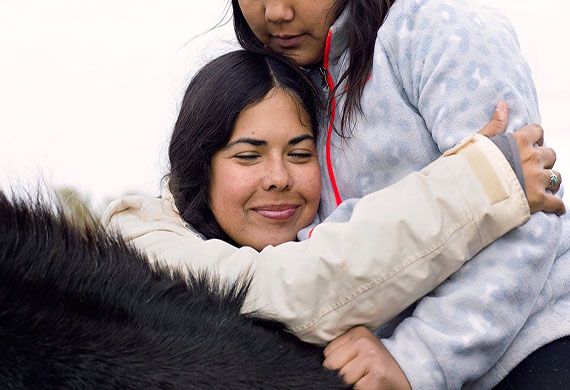Tribal attorney and activist Tara Houska writes about the importance of diversity of thought on the frontlines of the climate movement.
BY TARA HOUSKA
Wild rice makes a tiny exploding sound when it is struck by a cedar knocking stick. A burst, followed by the sounds of rice falling into a canoe below.
“It’s the sound the universe made when it began,” I was told by my long-time teacher. It’s the sound of life beginning, life continuing. Wild rice, what we know as manoomin, is the food that grows on water, the staple that lies at the heart of my people’s culture. It’s what I’ve given my heart, mind, and body to protect against yet another proposed tar sands pipeline, this time set to cut through Ojibwe territory in northern Minnesota.
It’s what sits in my heart as I push through room after room of decision-makers, legislators, financiers, corporate representatives, fellow advocates, climate scientists, climate deniers, and the rest of the cast of characters in the so-called environmental movement. Here, our sacred manoomin becomes a number, a statistical data point. The land that sustains every life on earth becomes a sum of degrees Celsius, carbon emissions, forest acreage, and economic impacts. Water is reduced from our literal lifeblood to a policy concern, a partisan issue up for debate.
The language of climate is part of the distancing we’ve broadly internalized, as far as I can tell. It’s a piece of the world full of invisible barriers and entrenched pathologies. The story of our self-destruction and what to do has been mostly told in cold, statistical analysis recited by a handful of mostly male, mostly non-POC, almost entirely non-Indigenous voices. The language of land is largely absent or relegated to the category of pitiable platitudes.
When Dr. Katharine Wilkinson and approached me about an anthology of women from many walks of life grappling with the crisis unfolding all around us, I was immediately drawn to being part of a less-familiar story, a narrative curated by women thinking in non-square shapes. Surely a crisis at the scale of eradicating all life requires diversity of thought, but I’ve heard nuclear, renewables, carbon offsetting and electoral politics presented as solutions more times than I can count. is something different.
Everything from climate grief to self-care to risking personal safety for those to come exists in its pages. Women discuss making new life during crisis; they imagine economies steeped in empathy and life in balance with the natural world. “The world is on fire” is right next to coping with trauma and taking action.
I’ve lived on frontlines for years at this point. My days in a D.C. office have morphed back into the forests I grew up with and an off-grid existence that challenges and shapes my perspective every day. I’ve faced down the banking industry behind Line 3 in their board rooms, I’ve trained young people about how to exercise their rights and challenge the system. All We Can Save offered space to question the efficacy of comfortable, well-worn advocacy routes and suggest we collectively assess our values lest we mimic the same structures that are killing all life.
Here in the wild rice, life’s truths are clear. We will knock, parch, roast, jig, and winnow to reach the place we can eat this delicate, nourishing plant. It’s hard work made easier by more hands.
Humans are not a plague on nature but integrated into manoomin cycles. Poling canoes through a floating field of rice so thick you cannot see a shoreline is carefully done, so as not to break the stalks for the next canoes, the next generation. We reseed as we go, by the falling rice that misses the canoe and by rice chiefs who will drop mud balls packed with rice seeds in the lakes at harvest end. Rice is weighed and tracked, to prevent over-consumption. Here, balance as a value is in practice.
Still, like for so many of the world’s inhabitants, life here is fragile. Disruption of water quality can wipe out an entire lake’s crop. Earlier this week, I looked up through the rice at the hazy red sky, praying for all the beings burning and fleeing out west. I thought of the piles of pipeline stacked a few miles north of this lake, desperately clawing at a chance to expand the tar sands. I wondered where we will go, whether human beings will pull it together to put survival ahead of personal comfort. I listened to the softly rustling rice and lifted up my cedar knockers, as my ancestors have for millennia. There’s work to be done.
Tara Houska—Zhaabowekwe, JD, is Couchiching First Nation Ojibwe, an attorney, environmental and indigenous rights advocate, and founder of . She lives in a pipeline resistance camp in Minnesota.
Source:
Related to SDG 13: Climate action and SDG 10: Reduced inequalities



